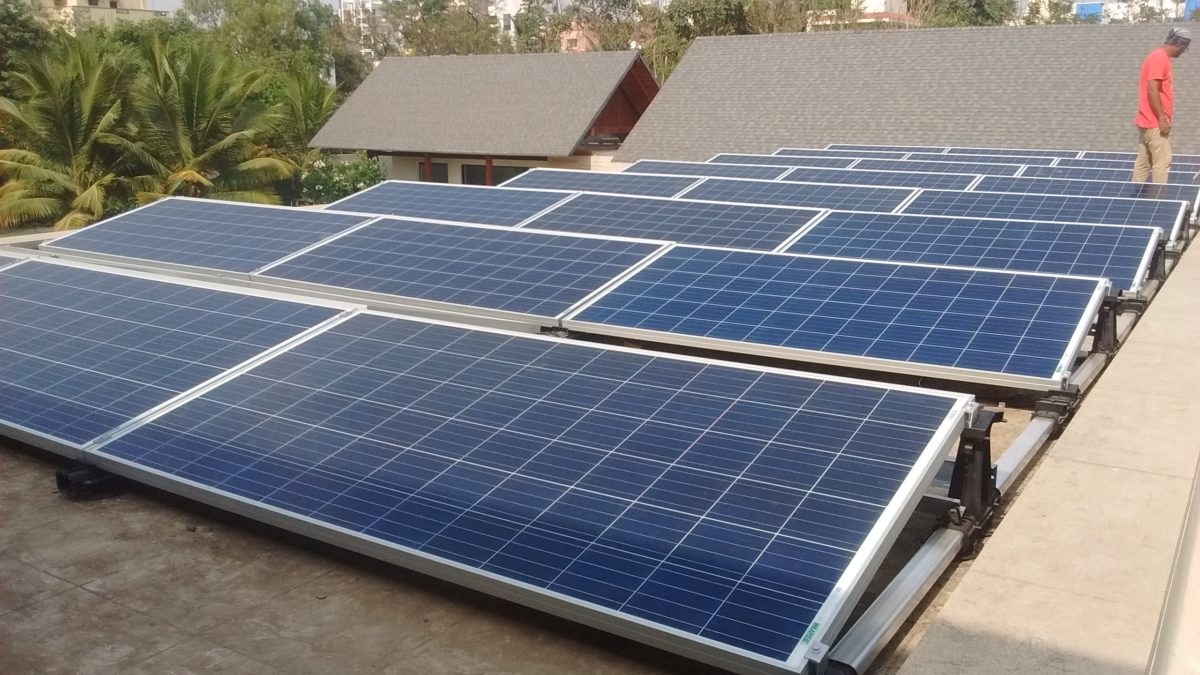India has a long way to go to achieve its ambitious rooftop solar PV target of 40 GW installed capacity by 2022.
Among several challenges to faster rooftop solar uptake in India, “high cost remains a prominent issue particularly for small businesses and residential consumers,” according to Vinay Rustagi, managing director at renewable energy consultancy firm Bridge To India.
Specifying regulatory hurdles, Rustagi says, “As planning laws keep changing constantly, residential consumers prefer to keep rooftops free for future construction. Rooftop solar is financially very attractive for business consumers, but the DISCOMs have not been supportive as it takes away some of their highest paying customers. There are many artificial caps and restrictions in net metering that discourage such consumers.”
Lack of a successful model to aggregate under the OPEX model, as well as consumer awareness are among other challenges to rooftop solar growth, pointed out Rajneesh Sharma, Director, Consulting-Energy & Resources, Deloitte, while speaking at Global RE-Invest 2018 earlier this month in Greater Noida.
Suggestions
The most important steps to promoting rooftop solar growth in India is to encourage and incentivise DISCOMs to support this market. They should be compensated adequately for their services as well as for upgrading the distribution infrastructure, say Vinay Rustagi.
“The government should withdraw capital subsidies and instead allocate funds towards consumer education and quality assurance initiatives. Facilitating financing options specifically for residential and SME consumers would boost adoption by such consumers. Lastly, policy stability is badly needed to attract more professional capital and to sustain growth,” he adds.
To overcome financing hurdles, Kuldeep Jain, founder and managing director at CleanMax Solar, suggests a pooled first-loss protection programme could help expand coverage towards a larger section of commercial and industrial consumers. This could be created at the government level, with multilateral or donor support.
“Standardised regulatory support involves removing artificial caps on capacity per roof, fast net metering approval, etc. These issues currently delay (solar) projects and lower the possible capacity to be installed,” Jain adds.
To sum up, “We need tariff rationalization; we need to avoid frequent changes to net-metering framework; DISCOMs and state nodal agencies too need to be supported to facilitate implementation of rooftop solar; and a rating mechanism should be created for developers,” says Rajneesh Sharma.
This content is protected by copyright and may not be reused. If you want to cooperate with us and would like to reuse some of our content, please contact: editors@pv-magazine.com.









2 comments
By submitting this form you agree to pv magazine using your data for the purposes of publishing your comment.
Your personal data will only be disclosed or otherwise transmitted to third parties for the purposes of spam filtering or if this is necessary for technical maintenance of the website. Any other transfer to third parties will not take place unless this is justified on the basis of applicable data protection regulations or if pv magazine is legally obliged to do so.
You may revoke this consent at any time with effect for the future, in which case your personal data will be deleted immediately. Otherwise, your data will be deleted if pv magazine has processed your request or the purpose of data storage is fulfilled.
Further information on data privacy can be found in our Data Protection Policy.